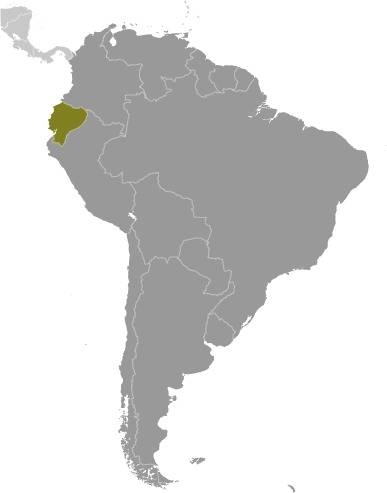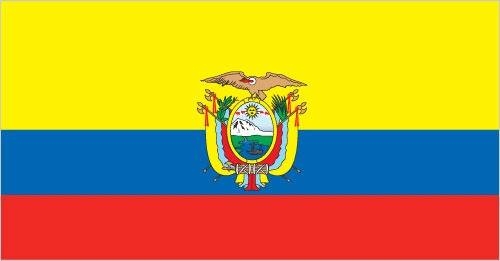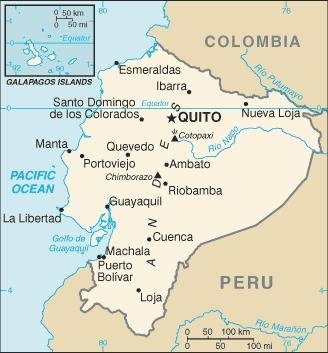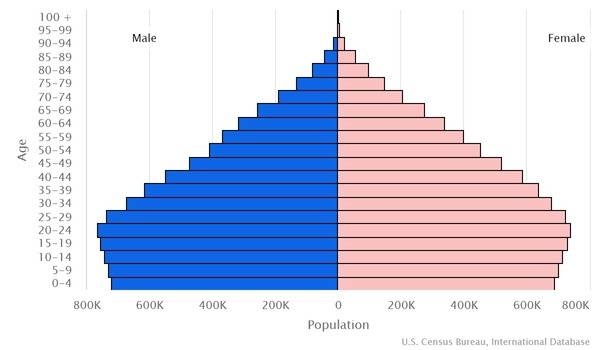Country Summary




Introduction
Background
Ecuador was a successor country following the collapse of Gran Colombia in 1830. Between 1904 and 1942, Ecuador lost territory in conflicts with its neighbors. The country has been politically unstable for much of its recent history, with 20 constitutions since gaining independence.
Geography
Area
total: 283,561 sq km
land: 276,841 sq km
water: 6,720 sq km
Climate
tropical along coast, becoming cooler inland at higher elevations; tropical in Amazonian jungle lowlands
Natural resources
petroleum, fish, timber, hydropower
People and Society
Population
17,289,554 (2022 est.)
Ethnic groups
Mestizo (mixed Amerindian and White) 71.9%, Montubio 7.4%, Amerindian 7%, White 6.1%, Afroecuadorian 4.3%, Mulatto 1.9%, Black 1%, other 0.4% (2010 est.)
Languages
Spanish (Castilian) 93% (official), Quechua 4.1%, other indigenous 0.7%, foreign 2.2%; note - (Quechua and Shuar are official languages of intercultural relations; other indigenous languages are in official use by indigenous peoples in the areas they inhabit) (2010 est.)
Religions
Roman Catholic 68.8%, Evangelical 15.4%, Adventist 1.2%, Jehovah's Witness 1%, other 1.3%, agnostic or atheist 1.4%, none 10.1%, don't know/no response 1% (2020 est.)
Population growth rate
1.13% (2022 est.)
Government
Government type
presidential republic
Capital
name: Quito
Executive branch
chief of state: President Guillermo LASSO Mendoza (since 24 May 2021); Vice President Alfredo Enrique BORRERO Vega (since 24 May 2021); the president is both chief of state and head of government
head of government: President Guillermo LASSO Mendoza (since 24 May 2021); Vice President Alfredo Enrique BORRERO Vega (since 24 May 2021)
Legislative branch
description: unicameral National Assembly or Asamblea Nacional (137 seats; 116 members directly elected in single-seat constituencies by simple majority vote, 15 members directly elected in a single nationwide constituency by proportional representation vote, and 6 directly elected in multi-seat constituencies for Ecuadorians living abroad by simple majority vote; members serve 4-year terms); note - all Assembly members have alternates from the same party who cast votes when a primary member is absent, resigns, or is removed from office
Economy
Economic overview
highly informal South American economy; USD currency user; major banana exporter; hard hit by COVID-19; macroeconomic fragility from oil dependency; successful debt restructuring; China funding budget deficits; social unrest hampering economic activity
Real GDP (purchasing power parity)
$182.24 billion (2020 est.)
Real GDP per capita
$10,300 (2020 est.)
Agricultural products
sugar cane, bananas, milk, oil palm fruit, maize, rice, plantains, poultry, cocoa, potatoes
Industries
petroleum, food processing, textiles, wood products, chemicals
Exports
$22.23 billion (2020 est.)
Exports - partners
United States 30%, China 13%, Panama 8%, Chile 7% (2019)
Exports - commodities
crude petroleum, crustaceans, bananas, fish, refined petroleum (2019)
Imports
$19.89 billion (2020 est.)
Imports - partners
United States 22%, China 18%, Colombia 9%, Panama 5% (2019)
Imports - commodities
refined petroleum, coal tar oil, cars, packaged medicines, soybean products (2019)
Page last updated: Monday, May 16, 2022
